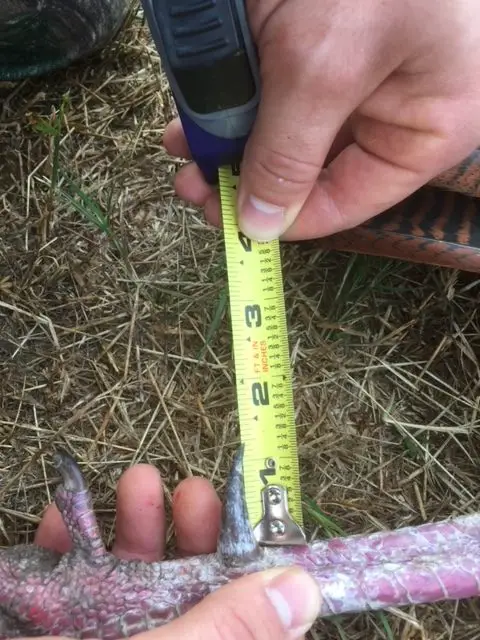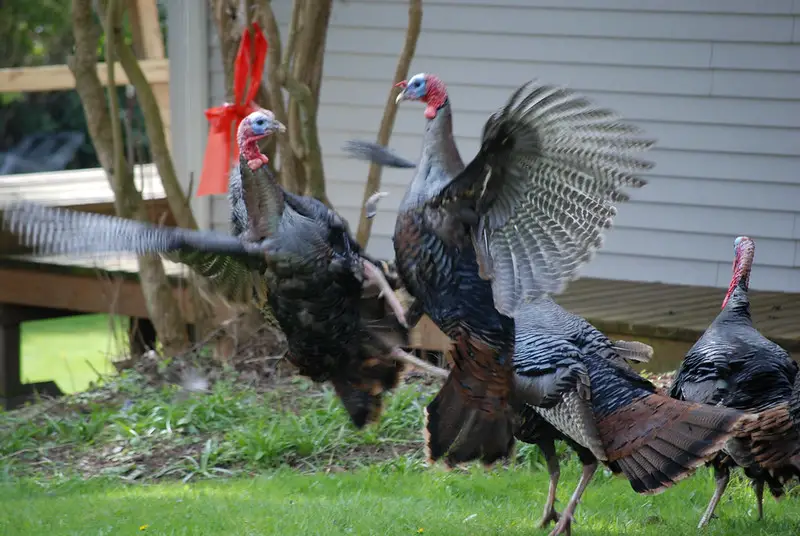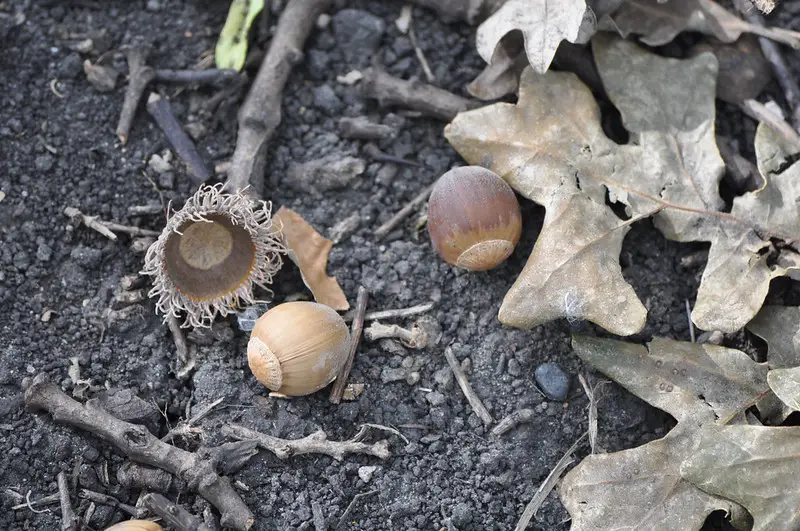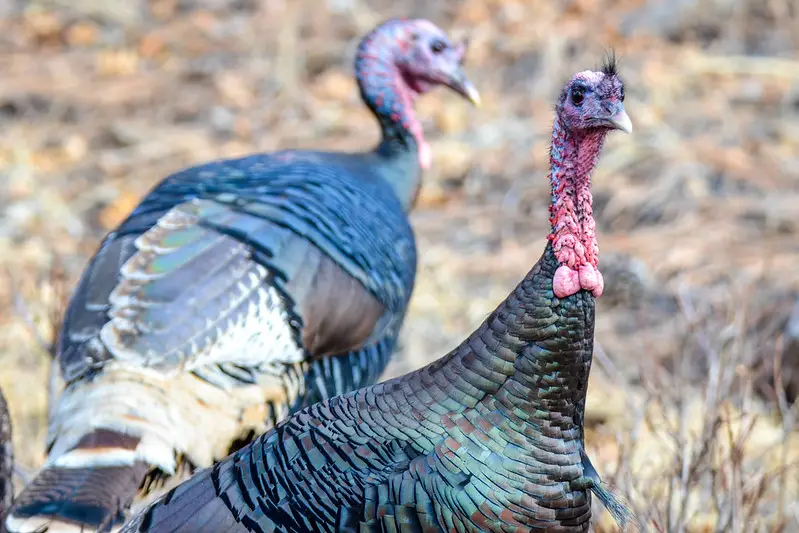
For duck hunters, it’s the bands. For deer hunters, it’s the racks. For hog hunters, it’s the tusks. For us, it’s the turkey spurs.
In fact, the nickname “limb hanger” comes from the concept of having spurs so long that you can hang the tom from a limb by his spurs.
There are several reasons why turkey hunters love long spurs.
A turkey’s spurs are one indicator of the age of a turkey. While we will get into why it is not an exact science for aging birds, the truth is, long spurs are very rare. It’s fun to think that you’ve killed a wily old gobbler who’s outsmarted many hunters before you.
We also assume that the boss gobbler is going to have the longest fighting hooks in the flock. So if you kill a tom with one and a half-inch spurs, you’d like to think he was the granddaddy of them all.
But what exactly is a turkey spur? Let’s explore.
What are turkey spurs?
Just above the foot, tom turkeys have a sharp claw known as a spur. Turkey Spurs are made from keratin, the same protein that produces hair, skin, and nails in a human. The color of these spurs can vary. They range from black to pink to nearly white.
These spurs are used by the toms to fight other toms and establish dominance prior to and during the breeding season. On occasion, turkeys will break their spurs while fighting each other or on other hard objects.
Of the subspecies, Osceolas tend to have the longest spurs. This is likely due to a combination of genetics as well as environmental factors such as the sandy and swampy habitats that an Osceola inhabits.
On the opposite end of the spectrum, Merriam’s turkeys tend to have the shortest spurs. This could be due to the rocky, mountainous terrain that they live in wearing down their spurs.
The longest turkey spur on record is 2 and 9/16 inches long. The turkey was killed in 2017 by Willard Dills in North Carolina.
What do they indicate?
The commonly held belief is that the older a gobbler is, the longer his spurs. In fact, some hunters believe that you can tell a turkey’s age simply by measuring his spurs.
Conventional wisdom states that jakes have spurs less than half an inch, two-year-old toms have spurs up to one inch, and three-year-old birds have one-inch plus spurs.
Through my experience, readings, and rumblings with other hunters over the years, I have come to believe that there are two-year-old turkeys with long spurs and four-year-old turkeys with short spurs. I also believe that as a turkey gets older, his spurs usually get longer.
There are many factors that influence the length of a turkey’s spurs including genetics, diet, age, and circumstances. As previously mentioned, spurs can be shortened or kept shorter by rubbing against harder surfaces. They may also break off in certain instances.
This phenomenon can be compared to the whitetail deers antlers. Younger deer with good genetics and nutrition may grow a larger rack than older deer that have inferior genetics and nutrition. However, in general, as a deer ages, his antlers grow larger until he eventually begins to decline.
In North Carolina, spurs were measured on turkeys that were killed with leg bands. These measurements were compared to the age of the gobblers (known from the banding process). The following excerpt concludes the findings from this study.
While most of the spur lengths on these known age birds did fall within the expected ranges, enough variation exists to cast doubt on aging birds beyond two years by spur length. To be accurate, gobblers should only be categorized as juveniles and adults.
Michael H. Seamster of the North Carolina Wildlife Resources Commission
This concurs with my theory that the length of a turkey’s spur is an indicator of his age, but not a hard and fast rule. That means that long spurs are very rare considering you must find a bird with the right combination of age, genetics, and circumstance.
What should I do with my turkey spurs?
In this day and age, any legal turkey is a trophy. Be proud of your kill and show off those hooks.
There are several creative ideas to suit almost any taste including full-body mounts, creations using the foot and leg, and spur ornaments and necklaces.
If you decide to mount your turkey, there are several poses that feature the spurs more prominently than others. In my opinion, a “fighting tom mount” is the best for this purpose followed closely by a “gobbling on the roost mount.” A simple mount of a tom strutting can also display the spurs nicely.
Be sure to research taxidermists in your area. Taxidermists have different specialties. Choose one with lots of experience mounting turkeys. Try to view his or her work in real life. Obviously, make sure turnaround time and prices match your desires.
If you’re looking for more of a do-it-yourself option, you can preserve the turkey’s foot and leg. There are several methods for this including using formaldehyde or salt and pinning the foot to cardboard or styrofoam. Be sure to store it in a cool place while it cures. Give it a few weeks before testing it to make sure it is no longer flexible.
Once you have cured your foot and leg, you can use it for a bookend or attach it to a fan mount.
Rather than preserve the entire leg and foot, you can cut off just the spur. After you cut off the leg directly above and below the spur, clean the scales, skin, and bone marrow off of the remaining portion leg bone as best as possible. You can then boil the bone and scrape some more until it is clean. Be careful not to boil too much or you will ruin the color of the actual spur.
You can use the empty shotgun shell from your kill along with the beard and spurs from your turkey to create a cool ornament. This can stand alone as a nice trophy, or be hung from a fan mount.
Many hunters will thread their turkey spurs onto a necklace similar to the way duck hunters thread bands on their lanyards. As you kill more turkeys, you can continue to add them to your necklace.
Conclusion
Turkey spurs are the best indicator of a “trophy” turkey. As we have discussed though, the trophy is in the eye of the beholder. If a jake gives you a good hunt and you’re excited to kill him, he is a trophy.
Don’t get too caught up in the numbers, but the next time you kill a bird with long spurs, appreciate everything that had to come together to develop this limb hanger.




Pingback: Turkey Hen vs Tom: How to Tell The Difference - Strutting Tom.com